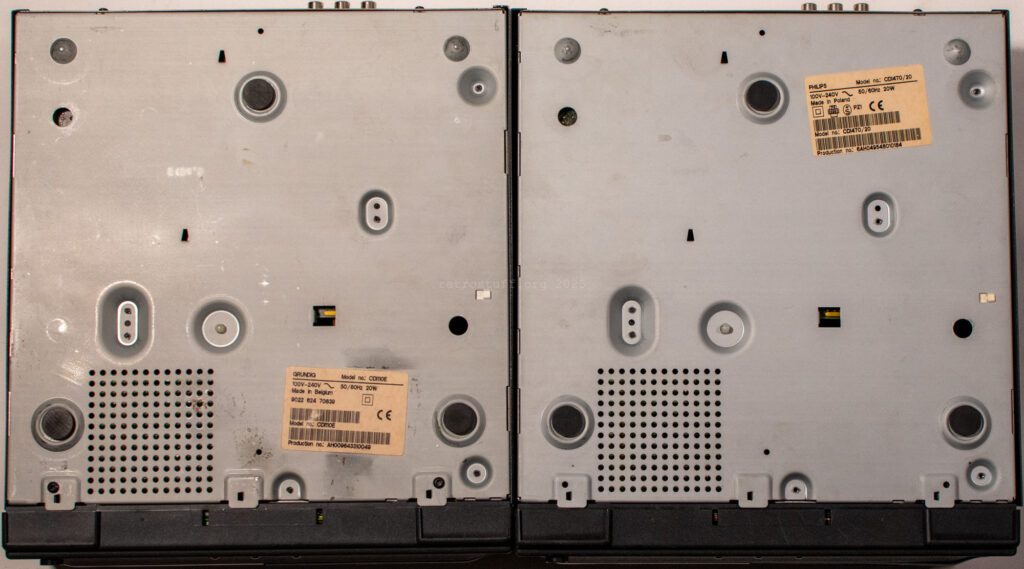
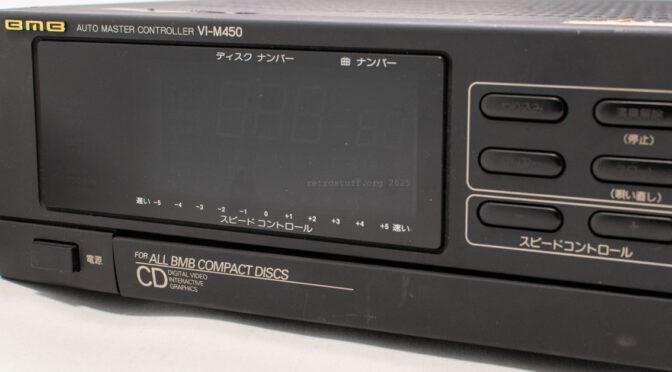
Master controller for Nikkodo / BMB CD karaoke systems. Like the BMB CDI-M1500 master controllers, it is similar to the Philips CDI 181 MultiMedia Controller (JNMS). The mainboards of these units were made by Kyocera. They all lack optical disc drives and require additional units (e.g. CDI 180 for JNMS and CDI-A1500 for BMB).
So far, four different hardware generations have been found, and there may be more. The hardware has evolved from being very similar to JNMS to something that hasn’t been seen in other CD-i players. This fourth generation moves away from Philips/Kyocera mainboards even more: Some components of the analogue video section have been moved to a separate PCB, and a Gate Array DVC (GMPEG) chipset has been added to the mainboard.
I use the first character of the CDI-M1500 serial numbers to identify different mainboards/generations. For the VI-M450, only one generation is currently known.
Continue reading Nikkodo / BMB Auto Master Controller VI-M450 →

Master controller for Nikkodo / BMB CD-i karaoke systems. They are similar to the Philips CDI 181 MultiMedia Controller (JNMS). The mainboards of these units were made by Kyocera. They all lack optical disc drives and require additional units (e.g. CDI 180 for JNMS and CDI-A1500 for BMB).
So far, three different hardware generations have been found, and there may be more. The hardware has evolved from being very similar to JNMS to something that hasn’t been seen in other CD-i players. To identify different mainboards/generations, I use the first character of the serial number:
Be sure to visit all of these pages, as the units are quite different and various amounts of work have been carried out on them.
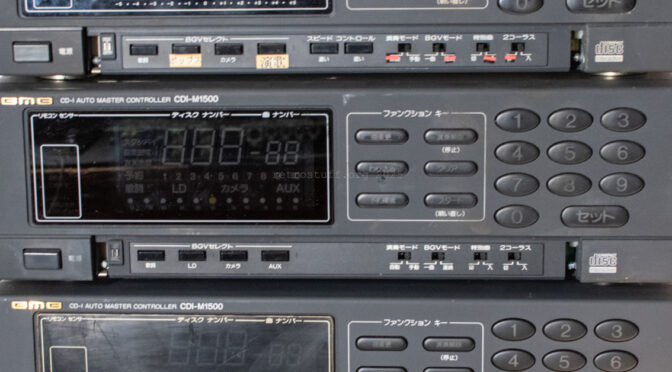
Master controller for Nikkodo / BMB CD-i karaoke systems. It is similar to the Philips CDI 181 MultiMedia Controller (JNMS). The mainboards of these units were made by Kyocera. They all lack optical disc drives and require additional units (e.g. CDI 180 for JNMS and CDI-A1500 for BMB).
So far, four different hardware generations have been found, and there may be more. The hardware has evolved from being very similar to JNMS to something that hasn’t been seen in other CD-i players. To identify different CDI-M1500 mainboards/generations, I use the first character of the serial number:
Continue reading Nikkodo / BMB CD-I Auto Master Controller CDI-M1500 (L) →
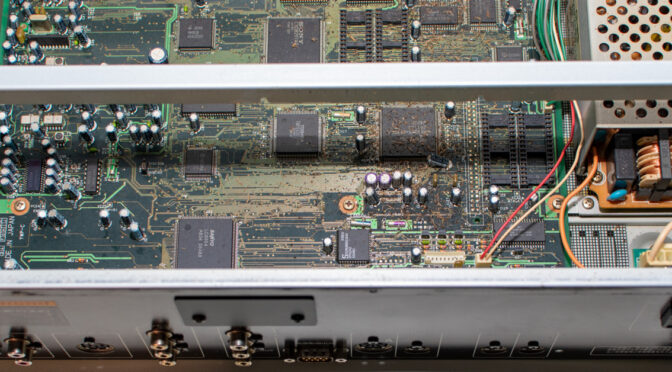
Master controller for Nikkodo / BMB CD-i karaoke systems. It is similar to the Philips CDI 181 MultiMedia Controller (JNMS). The mainboards of these units were made by Kyocera. They all lack optical disc drives and require additional units (e.g. CDI 180 for JNMS and CDI-A1500 for BMB).
So far, four different hardware generations have been found, and there may be more. The hardware has evolved from being very similar to JNMS to something that hasn’t been seen in other CD-i players. To identify different CDI-M1500 mainboards/generations, I use the first character of the serial number:
Continue reading Nikkodo / BMB CD-I Auto Master Controller CDI-M1500 (V) →
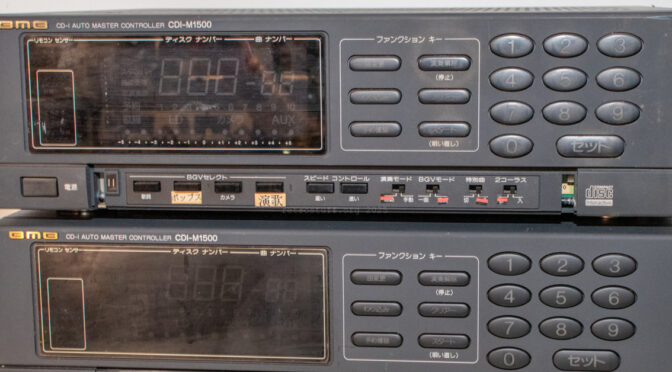
Master controller for Nikkodo / BMB CD-i karaoke systems. It is similar to the Philips CDI 181 MultiMedia Controller (JNMS). The mainboards of these units were made by Kyocera. They all lack optical disc drives and require additional units (e.g. CDI 180 for JNMS and CDI-A1500 for BMB).
So far, four different hardware generations have been found, and there may be more. The hardware has evolved from being very similar to JNMS to something that hasn’t been seen in other CD-i players. To identify different CDI-M1500 mainboards/generations, I use the first character of the serial number:
Continue reading Nikkodo / BMB CD-I Auto Master Controller CDI-M1500 (A) →
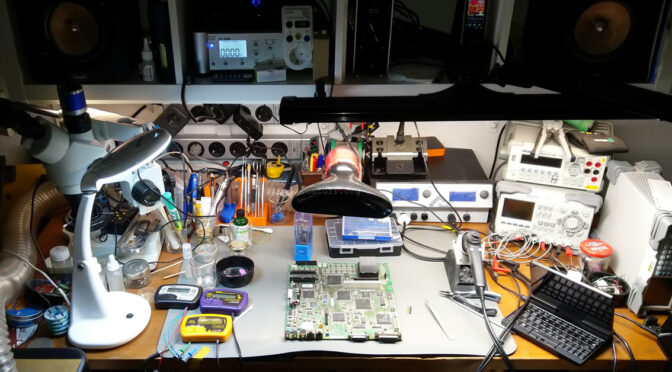
As it took longer and longer to finish my articles due to too many projects, I have now decided to introduce the WIP Pages. These pages contain photos of the disassembly and all the information I have found out so far about a particular device or project. For example, components, markings and pinouts.
The first WIP Page is about the Philips CDI 370 portable CD-i player. More will follow soon.
In addition, the structure of the main menu has not been revised for 13 years. To make it easier to find certain static pages and information without having to use the search or tag cloud, the first menu is now called Information. In this menu you will find
More static pages and menu items will follow.
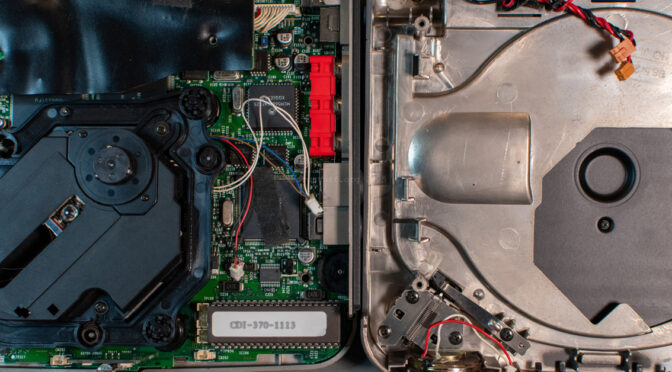
Defects: Partially dismantled, screws missing, power supply missing. Unit has been used for parts to repair another unit. Display does not work.
Continue reading Philips CDI 370 Portable CD-i Player →
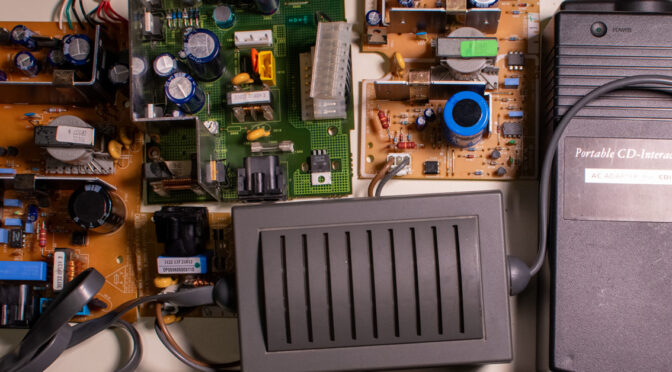
The aim of this article is to compile a comprehensive documentation of all known power supply units for Philips CD-i players. It is a work in progress and will be updated with new information at regular intervals. I welcome feedback, especially if you discover an error or can contribute additional information.
Frequently asked questions concern the operational safety of a model in different countries and the location of fuses. To answer these questions accurately, you need to know the specific built-in or external power supply associated with the model, version and revision of the player. The grouping by mainboard/hardware generation provides a clear overview, as already shown in the article Modifications for Philips CD-i players.
The documentation of the fuses in the Mono III and IV generations began years ago with the article Philips CD-i Mono III / IV Fuses, and it was always the plan to summarise it in a more comprehensive article covering all generations.
This article now follows that approach and presents specifications, information on fuses, compatibility and possible modifications. It summarises all relevant data from the previously mentioned articles.
Continue reading Philips CD-i Power Supply Units →
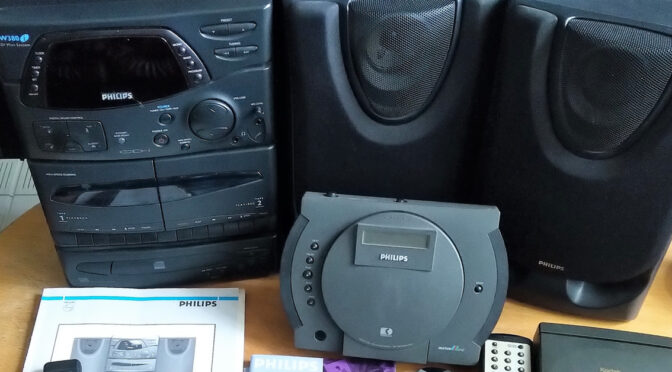
The Philips FW380i Mini System landed unexpectedly on my repair table last August. I never intended to get one of these models because the CD-i part is at the lowest end of CD-i hardware (very similar to the Roboco mainboard of CDI450 etc.) and also the build quality of FW mini system is not something I would have bought or used in the 90s. However, this particular CD-i mainboard was only used for this model and has some very unique features such as a separated servo board, a connector for communication with the FW part and even some unused connectors for a disc changer – which unfortunately never saw the light of day. Long story short: this model was never properly analysed, which is why it piqued my interest.
In this article I will show you how I carried out the disassembly and basic cleaning last year. I will follow up about diagnosis, repair and possibly modifications at a later point. The exact model/version I’m taking apart here is an FW380i/20 – which means that a 22ER9956/20 DVC mini cartridge was installed at the factory.
Continue reading Philips FW380i Mini System Repair Part 1 →


